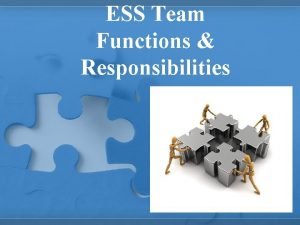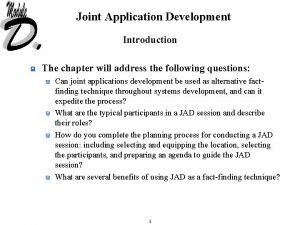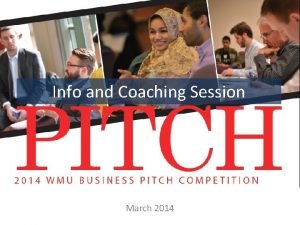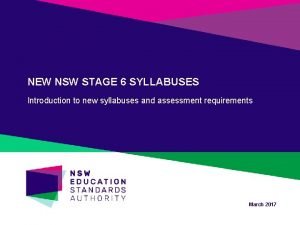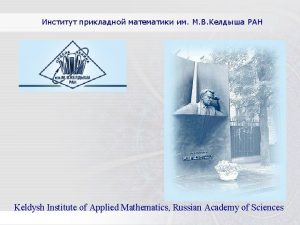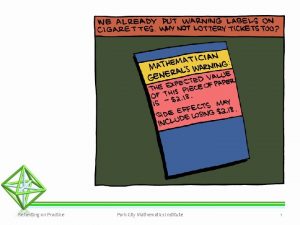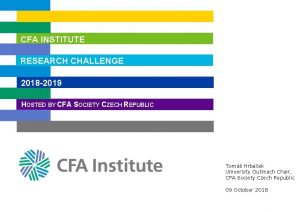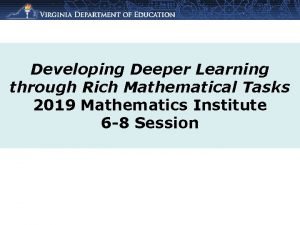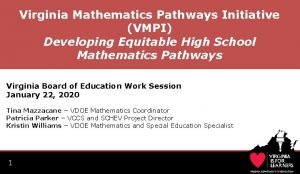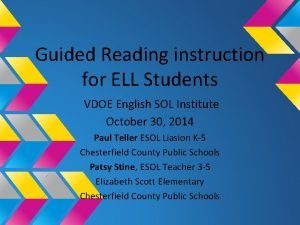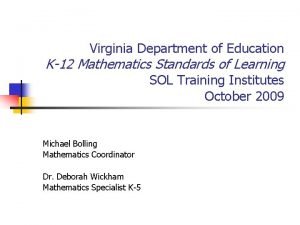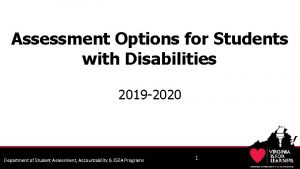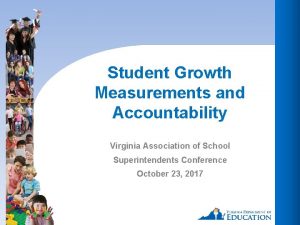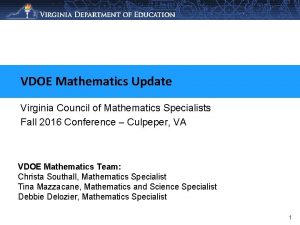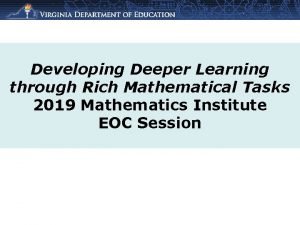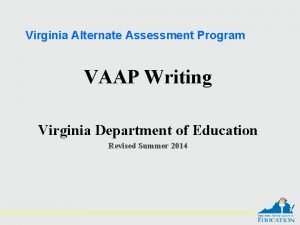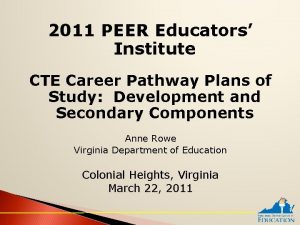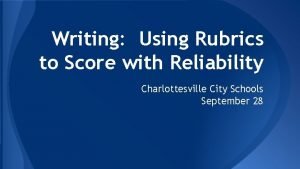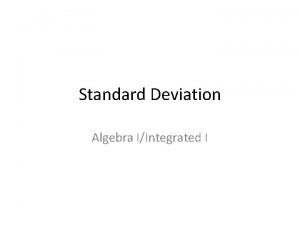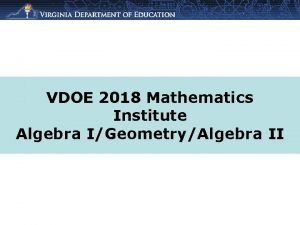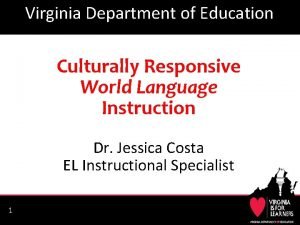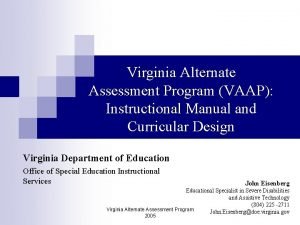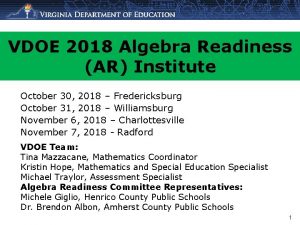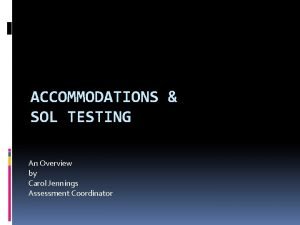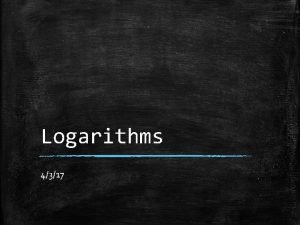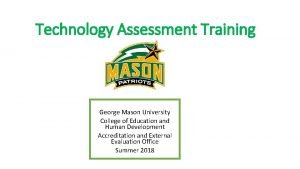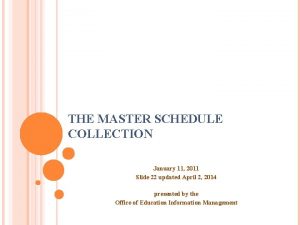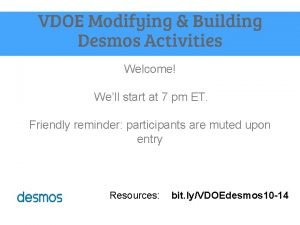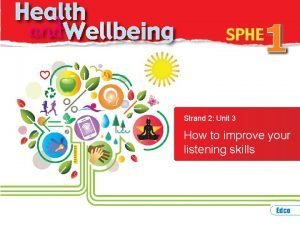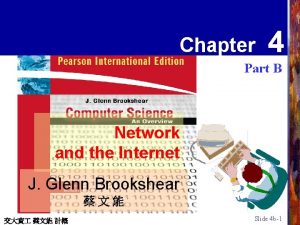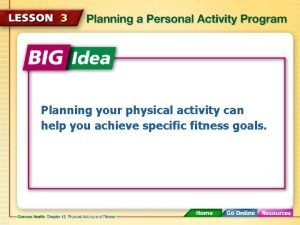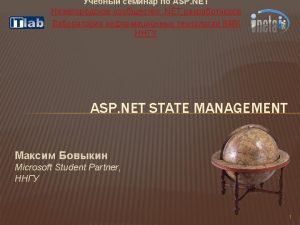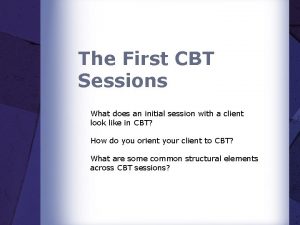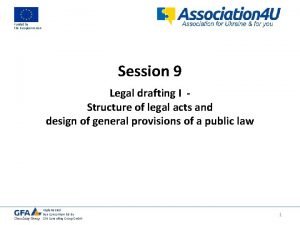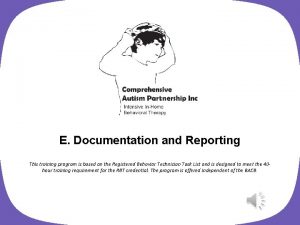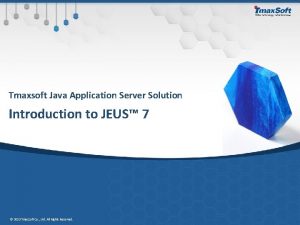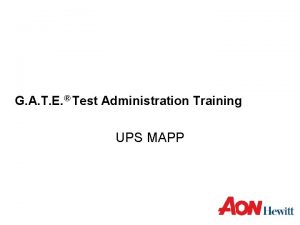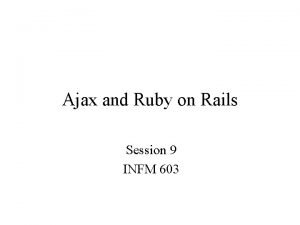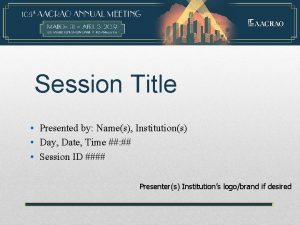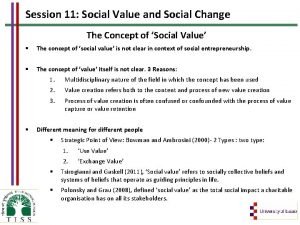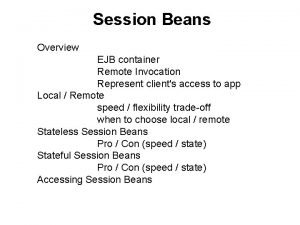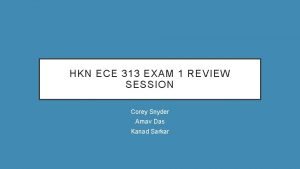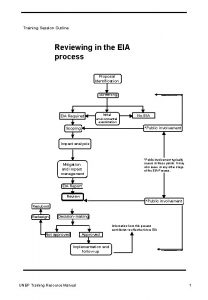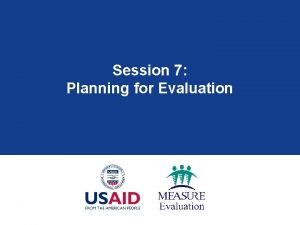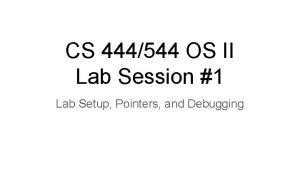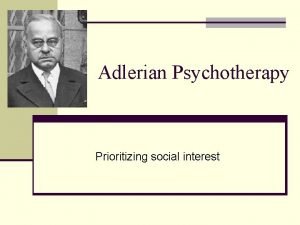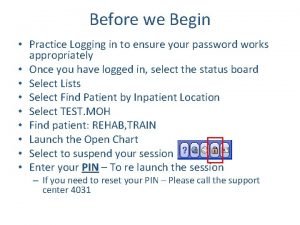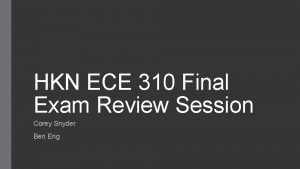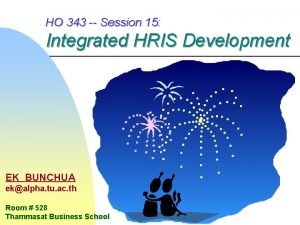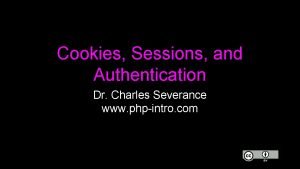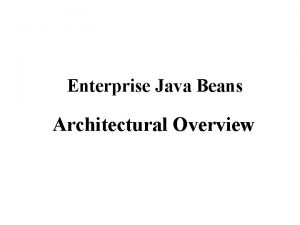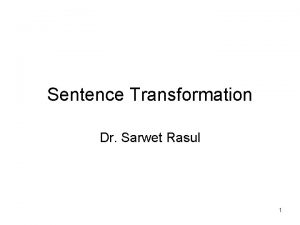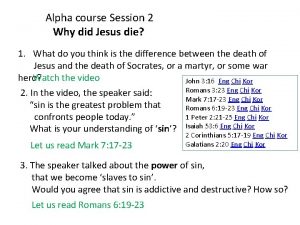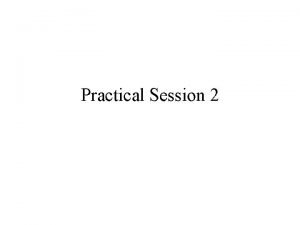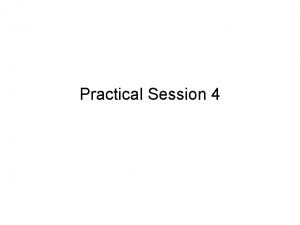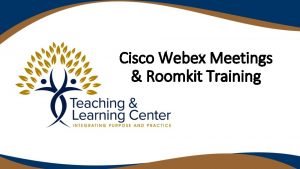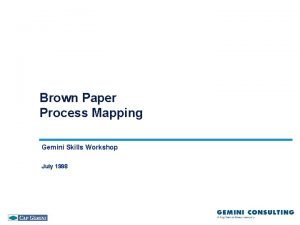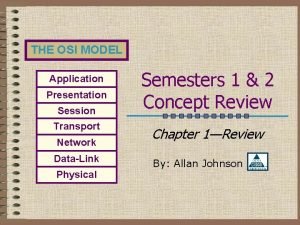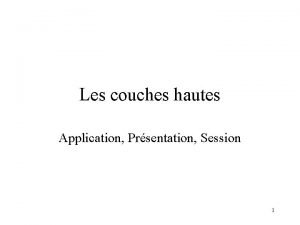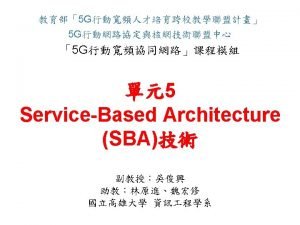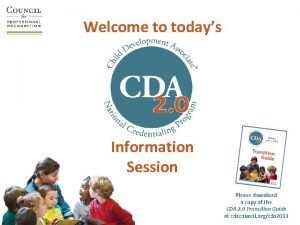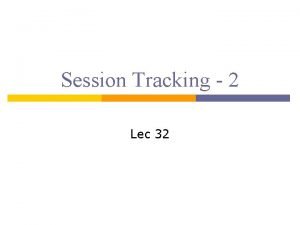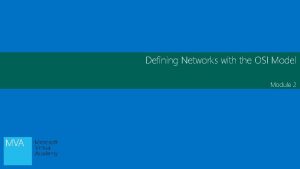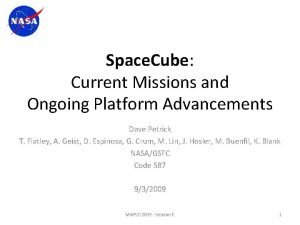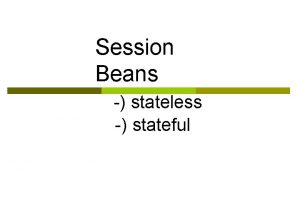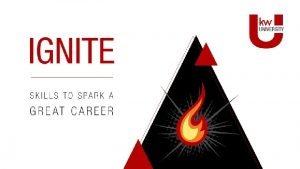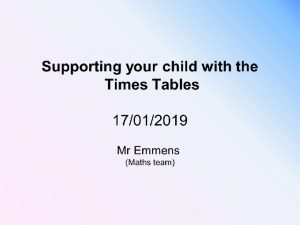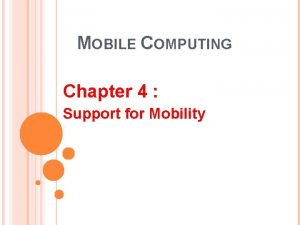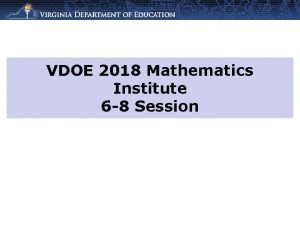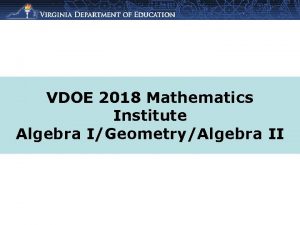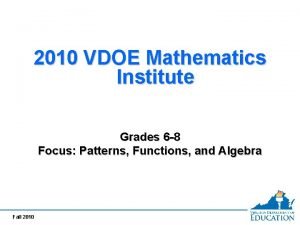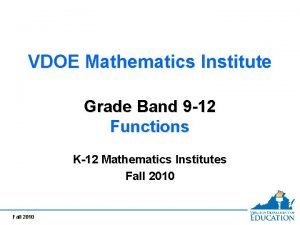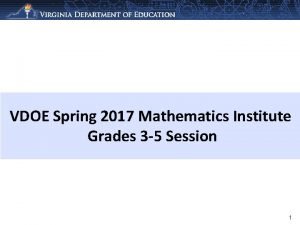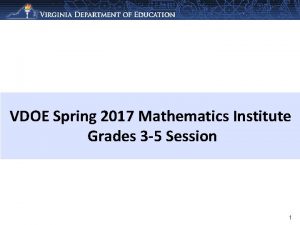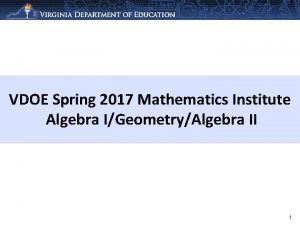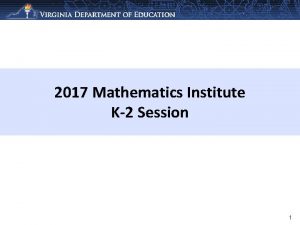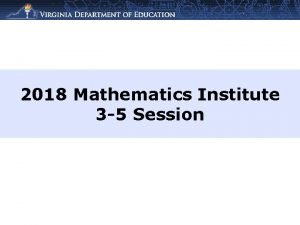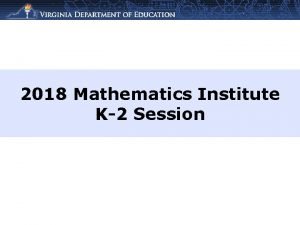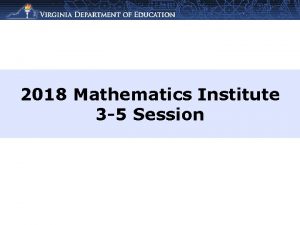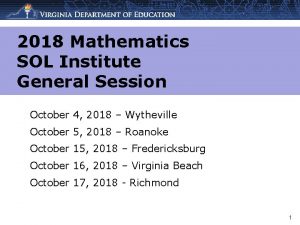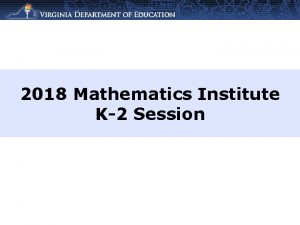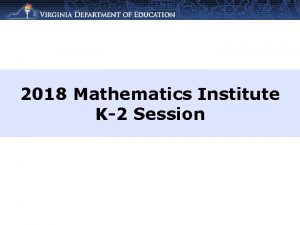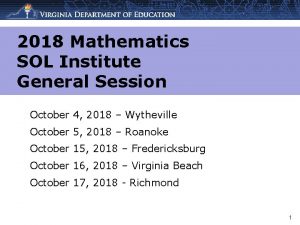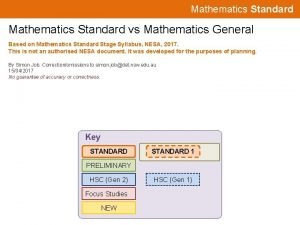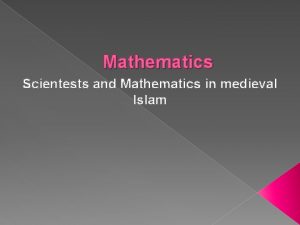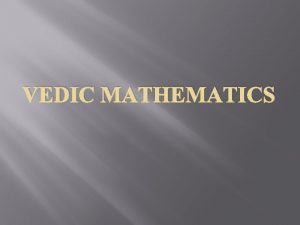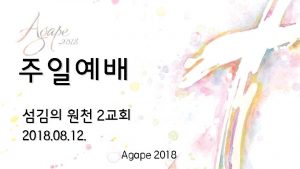VDOE 2018 Mathematics Institute 6 8 Session Agenda

































































































- Slides: 97

VDOE 2018 Mathematics Institute 6 -8 Session

Agenda Welcome and Introductions • Facilitate Meaningful Discourse • Mathematical Community • • Pose Purposeful Questions and Elicit and Use Evidence of Student Thinking Lemonade Task Telling the Tale Task Lunch Support Productive Struggle and Use and Connect Representations Taking Action – Next Steps 2

Parking Lot

Which one doesn’t belong? 4

How many? 5

Resources for initiating student engagement: Which one doesn't belong Dot images Table Talk Math Real World Images Would you rather math Estimation 180 101 Questions 6

I. Teaching Practice: Facilitate Meaningful Discourse

Essential Question What elements must be in place to support meaningful mathematical discourse? 8

Eight Teaching Practices 9

Mathematics Process Goals for Students “The content of the mathematics standards is intended to support the five process goals for students” - 2009 and 2016 Mathematics Standards of Learning Communication Connections Problem Solving Representations Mathematical Understanding Reasoning 10

Teaching Practices- Process Goals 11

Teaching Framework for Mathematics Adapted from Smith, M. et al. (2017) Taking Action – Implementing Effective Mathematics Teaching Practices Series, National Council of Teachers of Mathematics. 12

Video Reflection 13

Video Reflection • student voices • collaboration between students promotes learning • teacher gathers more information about student understandings • talk moves (turn and talk, restate, repeat) • promote reasoning • equity - encourages students who are hesitant to participate • justify 14

In Our Classroom We… ● need our students to be comfortable talking about mathematics. ● want middle school students participating in number talks. ● will make use of mathematics vocabulary. ● see student talk dominating discussions. ● see students who are supportive and accepting of support. 15

Mathematics Community What it is NOT: What it is: • Teachers doing most of the math • Students doing most of the math • Assigned tasks • Student choice • Teachers showing the procedure and talking about the steps to follow • Students talking about their mathematical thinking and reasoning • Teachers as holders of knowledge • Teachers acting as facilitators – asking good questions • Students working in isolation; sharing answers or strategies is cheating • Students working collaboratively and learning from one another • Teachers rescuing students • Students struggling with challenging mathematics and learning from errors • Teachers presenting to the whole class • Teacher working with small groups • Focused on procedural skill • Focused on conceptual understanding 16

Levels of Classroom Discourse Rich classroom discourse is a necessity. This rubric lets you consider where your classroom is on the continuum. Sort the two columns so that “ 0” is the least and “ 3” is most advanced. Use the LIGHT GREEN papers for the “Teacher Role” column and the GRAY papers for the “Building Student Responsibility Within the Community” column. 17

Components and Levels of a Math Talk Learning Community Teacher role Level 0 Teacher is at the front of the room and dominates the conversation. Level 1 Teacher encourages the sharing of math ideas and directs speaker to talk to the class, not to the teacher only. Level 2 Teacher facilitates conversation between students and encourages students to ask questions to one another. Level 3 Students carry the conversations themselves. Teacher only guides from the periphery of the conversation. Teacher waits for students to clarify thinking of others. 18

Components and Levels of a Math Talk Learning Community Building student responsibility within the community Level 0 Culture supports students keeping ideas to themselves or just providing answers when asked. Level 1 Students believe that their ideas are accepted by the classroom community. They begin to listen to one another supportively and to restate in their own words what another student has said. Level 2 Students believe that they are math learners and that their ideas and the ideas of their classmates are important. They listen actively so that they can contribute significantly. Level 3 Students believe that they are math leaders and can help shape thinking of others. They help shape others’ math thinking in supportive, collegial ways and accept the same support from others. 19

Reflect on the Essential Question What elements must be in place to support meaningful mathematical discourse? 20

Time to Reflect Complete Module 1 section of reflection document What elements must be in place to support meaningful mathematical discourse? 21

II. Teaching Practices: Pose Purposeful Questions Elicit and Use Evidence of Student Thinking

Teaching Framework for Mathematics Adapted from Smith, M. et al. (2017) Taking Action – Implementing Effective Mathematics Teaching Practices Series, National Council of Teachers of Mathematics. 23

Essential Questions How does posing purposeful questions promote equitable learning opportunities for all students? How does eliciting and using evidence of student thinking support efforts to pose purposeful questions? 24

Pose Purposeful Questions ● Carefully planning questions before teaching the lesson is essential. ● Questions should reveal student understanding. ● Questions should foster discussion. ● Questions are intended to focus and clarify student thinking. 25

Five Types of Questions Question Type Gathering Information Probing thinking Making the mathematics visible Encouraging reflection and justification Engaging with the reasoning of others Takin g Act i – pag on book e 81 Purpose Ask students to recall facts, definitions, or procedures. Ask students to explain, elaborate, or clarify their thinking, including articulating the steps in solution methods or completion of a task. Ask students to discuss mathematical structures and make connections among mathematical ideas and relationships. Reveal deeper insight into student reasoning and actions, including asking students to argue for the validity of their work. Help students to develop an understanding of each other’s solution paths and thinking, and lead to the coconstruction of mathematical ideas. 26

Classifying Questions Takin g Act – pag ion boo k e 9293 Assessing Questions Advancing Questions Teacher stays to hear the answer to the question. Teacher walks away, leaving students to figure out how to proceed. ● Are based closely on the work that the student has produced. ● Clarify what the student has done and understands about what s/he has done. ● Gives the teacher information about what the student understands ● Use what students have produced as a basis for making progress toward the target goal of the lesson. ● Move students beyond their current thinking by pressing students to extend what they know to a new situation. ● Press students to think about something they are not currently thinking about. 27

Desmos Scientific Calculator Virginia Scientific Calculator 28

The Lemonade Stand Task 29

Vertical Progression: 6. 1 7. 1 8. 1 • Rational numbers • Real numbers 30

Vertical Progression: 7. 10 6. 12 8. 16 Proportional Relationships 31

Lemonade Stand Task Launch • Video Launch 32

The Lemonade Stand Task • Work on the task individually for 3 minutes. • Have each person share their strategy with the table. • Pick 2 to 3 different strategies that your table would like to share with the whole group. • Display those strategies on chart paper. 33

Posing Purposeful Questions • Questions that Foster Discussion • Question Stems 34

The Lemonade Stand Task • Pick up a letter card (A-H) from the center of the table. • Rearrange to meet with others who have chosen the same letter. • After you have received a sample of student work, brainstorm purposeful questions that you might ask to focus student thinking. 35

The Lemonade Stand Task • Return to your original table. • Partner with tablemates who recorded questions for the same student (A/E, B/F, C/G, and D/H) • Share the student work and the questions that your group created. 36

Student Work 37

Student Work 38

Student Work 39

Student Work 40

The Lemonade Stand Task Assessing Questions Advancing Questions Gathering Information Ask students to recall facts, definitions, or procedures. Probing Thinking Ask students to explain, elaborate, or clarify their thinking, including articulating the steps in solution methods or completion of a task. Making the mathematics visible Ask students to discuss mathematical structures and make connections among mathematical ideas and relationships. Encouraging reflection and justification Reveal deeper insight into student reasoning and actions, including asking students to argue for the validity of their work. Engaging with the reasoning of others Help students to develop an understanding of each other’s solution paths and thinking, and lead to the coconstruction of mathematical ideas. 41

Posing Purposeful Questions Research • Many classrooms follow the traditional I-R-E (Initiate-Response-Evaluate) format, rather we should “engage students in constructing knowledge and in collaborative problem-solving. ” (Mehan 1979 a) • “…teachers in the United States pose fewer high-level questions in middle school mathematics classrooms than teachers in other countries. ” Stigler and Hiebert (1999) 42

Posing Purposeful Questions Promoting Equity • Positioning the way students are “entitled, expected, and obligated to interact with one another as they work on content together” (Gresalfi and Cobb 2006, p 51) • Considerations: – Are all students’ ideas and questions heard, valued and pursued? – Who does the teacher call on? – Whose ideas does the class examine and discuss? – Whose thinking does the teacher select for further inquiry and whose thinking does the teacher disregard? 43

Elicit and Use Evidence of Student Thinking - Research • “Teachers who consistently elicit student thinking during a lesson can use that evidence to adapt their instruction to better meet their students’ needs (Leahy et al. 2005). ” • “If teachers wait until the end of the week or the end of a unit to elicit and use evidence of student thinking, they have little clear information on which to base immediate instructional decisions in the lessons leading up to that assessment (William 2007). ” 44

Elicit and Use Evidence of Student Thinking - Promoting Equity • “This move can strengthen students’ identities as knowers and doers of mathematics, in addition to giving teachers a more nuanced view of their own students as learners (Crespo 2000). ” • Invite broader participation by explicitly asking other students to comment on the work, promoting diversity of views and strategies in the classroom. 45

Levels of Classroom Discourse Return to the sort. This time sort and consider where your classroom is in terms of the “Questioning” column (LIGHT YELLOW) and the “Explaining Mathematical Thinking” column (BLUE). 46

Components and Levels of a Math Talk Learning Community Questioning Level 0 Teacher is only questioner. Questions serve to keep students listening to teacher. Students give short answers and respond to teacher only. Level 1 Teacher questions begin to focus on student thinking and less on answers. Only teachers ask questions. Level 2 Teacher asks probing questions and facilitates some student-to-student talk. Students ask questions of one another with prompting from teacher. Level 3 Student-to-student talk is student initiated. Students ask questions and listen to responses. Many questions ask “why” and call for justification. Teacher questions may still guide discourse. 47

Components and Levels of a Math Talk Learning Community Explaining mathematical thinking Level 0 Teacher questions focus on correctness. Students provide short answer-focused responses. Teacher may give answers. Level 1 Teacher probes student thinking somewhat. One or two strategies may be elicited. Teacher may fill in an explanation. Students provide brief description of their thinking in response to teacher probing. Level 2 Teacher probes more deeply to learn about student thinking. Teacher elicits multiple strategies. Students respond to teacher probing and volunteer their thinking. Students begin to defend their answers. Level 3 Teacher follows student explanations closely. Teacher asks students to contrast strategies. Students defend and justify their answers with little prompting from the teacher. 48

Supporting Equitable Mathematics Teaching 49

Reflect on Essential Questions How does posing purposeful questions promote equitable learning opportunities for all students? How does eliciting and using evidence of student thinking support efforts to pose purposeful questions? 50

Time to Reflect Complete Module 2 section of reflection document How does posing purposeful questions promote equitable learning opportunities for all students? How does eliciting and using evidence of student thinking support efforts to pose purposeful questions? 51

Desmos – go to student. desmos. com LOG IN WITH THE CLASS CODE JR 7 GGE INTERACT WITH OTHERS AS YOUR SCREEN DESCRIBES 52

Teacher. desmos. com 53

Proportional Reasoning Lesh, Post and Behr (1988, p. 93) call proportional reasoning “the capstone of children's elementary arithmetic” and “the cornerstone of all that is to follow” 54

III. Teaching Practices: Support Productive Struggle Use and Connect Mathematical Representations

Teaching Framework for Mathematics Adapted from Smith, M. et al. (2017) Taking Action – Implementing Effective Mathematics Teaching Practices Series, National Council of Teachers of Mathematics. 56

Essential Questions How does supporting productive struggle promote equity, student agency, and identity? How does using and connecting mathematical representations improve efforts to support productive struggle? 57

Telling the Tale Task 58

Vertical Progression: 7. 10 6. 12 8. 16 Proportional Relationships 59

Telling the Tale Task - Launch • Video launch 60

Telling the Tale Task: SOL 6. 12 61

Telling the Tale Task Independently: Explore the task and begin solving for 5 minutes Partner or Group: continue work for 10 minutes 62

Supporting Productive Struggle • Four types of teacher responses to struggle (Warshauer, 2015 b, p. 387): – Telling – Directed Guidance – Probing Guidance – Affordance 63

Supporting Productive Struggle • Supporting students who can’t get started: – Select a task that has multiple entry points. – Make sure your launch has specifics regarding expectations and/or background knowledge. – Ask questions to determine what the students understand. 64

Supporting Productive Struggle • Four strategies for supporting productive struggle (Warshauer, 2015 a, p. 392): – question – encourage – give time – acknowledge 65

Telling the Tale Task: SOL 7. 10 66

Telling the Tale Task: SOL 7. 10 6 th 7 th 67

Telling the Tale Task Independently: Explore the task and begin solving Part II of the 7 th grade task for 5 minutes Partner or Group: continue work on Part II for 5 minutes 68

Telling the Tale Task 69

Telling the Tale Task • Lesson Planning PRIOR 70

Telling the Tale Task: SOL 8. 16 71

Telling the Tale Task Independently: Explore the task and begin solving the 8 th grade task for 5 minutes Partner or Group: continue work on the 8 th grade task for 10 minutes 72

Telling the Tale Task 73

Connecting to the Curriculum Framework 7. 10 6. 12 8. 16 74

Support Productive Struggle Research • Count off by 5’s • Rearrange to meet with a group of colleagues that share your number. • Each number group receives one “new expectation for students” • Brainstorm two things: – teacher actions consistent with expectations – indicators of success • Pick a group member to share 75

New Expectations for Students 76

New Expectations for Students 77

New Expectations for Students 78

New Expectations for Students 79

New Expectations for Students 80

Support Productive Struggle Promoting Equity • ensure each student has access to challenging mathematical work • teachers believe that all students can learn mathematics • reasonable and appropriate accommodations are made as needed 81

Use and Connect Mathematical Representations Adapted from NCTM 2014, p. 25 82

Use and Connect Mathematical Representations - Research ● pg 119 “. . . early and consistent work moving across multiple representations, including context through the use of meaningful contextual tasks, helps students better understand why mathematics works and how to deploy mathematical tools effectively and efficiently. ” ● “The use of manipulatives and pictures should not fade in the middle grades but should continue alongside the development of more mathematically specific representations like symbolic expressions and equations, tables, and graphs (Tripathi 2008). ” 83

Use and Connect Mathematical Representations - Promoting Equity ● Allowing entry at different levels - such as building with manipulatives, drawing pictures, or creating tables - can help students engage in the mathematical ideas in ways that make sense to them. ● “. . . allows students to draw on multiple resources of knowledge, one of the five equity-based practices (Aguirre, Mayfield-Ingram, and Martin 2013). ” ● teachers must explicitly value and encourage multiple mathematical representations. . . 84

Levels of Classroom Discourse Finally explore where your classroom is with the “Mathematical Representations” column as you sort the remaining GOLD/ORANGE papers. 85

Components and Levels of a Math Talk Learning Community Mathematical representations Level 0 Representations are missing, or teacher shows them to students. Level 1 Students learn to create math drawings to depict their mathematical thinking. Level 2 Students label their math drawings so that others are able to follow their mathematical thinking. Level 3 Students follow and help shape the descriptions of others’ math thinking through math drawings and may suggest edits in others’ math drawings. 86

Reflect on Essential Questions How does supporting productive struggle promote equity, student agency, and identity? How does using and connecting mathematical representations improve efforts to support productive struggle? 87

Time to Reflect Complete Module III section of reflection document How does supporting productive struggle promote equity, student agency, and identity? How does using and connecting mathematical representations improve efforts to support productive struggle? 88

IV. Taking Action – Next Steps

Essential Questions How will the teaching practices shared today (Supporting Productive Struggle, Posing Purposeful Questions, Using and Connecting Mathematical Representations, and Eliciting and Using Evidence of Student Thinking) facilitate meaningful mathematical discourse? How does facilitating meaningful mathematical discourse promote equity? 90

Summarizing • Climate • Process goals connected to 8 mathematical practices • Technology - including Desmos • Equity • Thoughtful and thorough lesson planning • Reflection is deliberate 91

Teaching Framework for Mathematics Adapted from Smith, M. et al. (2017) Taking Action – Implementing Effective Mathematics Teaching Practices Series, National Council of Teachers of Mathematics. 92

List evidence of all four practices in the video of Elizabeth Brovey’s classroom. 93

2016 Mathematics Standards of Learning Instructional Resources Currently Available • 2016 Mathematics Standards of Learning and Curriculum Frameworks • 2009 to 2016 Crosswalk (summary of revisions) documents • Narrated Crosswalk Presentations • Test Blueprints for SOL Assessments • 2017 SOL Mathematics Institutes PD Resources – includes progressions for select 2016 content • Sample K-3 Mathematics Achievement Records • Vocabulary Word Wall Cards – 2016 SOL • Mathematics Instructional Plans (formerly Enhanced Scope and Sequence) correlated to 2016 SOL • Co-teaching Mathematics Instructional Plans 2016 SOL Resources – Tentatively Scheduled to be Available Fall 2018 • Mathematics Instructional Videos 94

Reflect on Essential Questions How will the teaching practices shared today facilitate meaningful mathematical discourse? How does facilitating meaningful mathematical discourse promote equity? 95

Time to Reflect Based on all module reflections, how will you provide professional development on these teaching practices? 96

Please contact us The VDOE Mathematics Team at Mathematics@doe. virginia. gov 97
 Ess
Ess Circle k #45067
Circle k #45067 How to conduct jad sessions
How to conduct jad sessions Coaching session agenda
Coaching session agenda Life skills outcomes stage 6
Life skills outcomes stage 6 Agenda sistemica y agenda institucional
Agenda sistemica y agenda institucional Netsuite schema browser 2018
Netsuite schema browser 2018 Personalisation agenda 2018
Personalisation agenda 2018 Gartner cio agenda
Gartner cio agenda Keldysh institute of applied mathematics
Keldysh institute of applied mathematics Park city mathematics institute
Park city mathematics institute B a f c j e
B a f c j e Cfa research challenge rules
Cfa research challenge rules Vdoe rich mathematical tasks
Vdoe rich mathematical tasks Vmpi facilitators
Vmpi facilitators Vdoe math
Vdoe math Deeper learning conference
Deeper learning conference Vdoe geometry standards 2016
Vdoe geometry standards 2016 Vaap aligned standards of learning 2020-2021
Vaap aligned standards of learning 2020-2021 Vdoe race codes
Vdoe race codes Sol score chart virginia
Sol score chart virginia Vdoe math changes
Vdoe math changes Vdoe math tasks
Vdoe math tasks Ttac vaap
Ttac vaap Vdoe career clusters
Vdoe career clusters Maggie clemmons vdoe
Maggie clemmons vdoe Sol writing rubric
Sol writing rubric Standard deviation algebra
Standard deviation algebra Vdoe desmos
Vdoe desmos Vdoe culturally responsive teaching
Vdoe culturally responsive teaching Sol virginia
Sol virginia Vdoe algebra readiness formative assessments
Vdoe algebra readiness formative assessments Vdoe math aids
Vdoe math aids Desmos log log plot
Desmos log log plot Vdoe quick checks
Vdoe quick checks Vdoe technology standards
Vdoe technology standards Vdoe sced crosswalk
Vdoe sced crosswalk Desmos graphing calculator
Desmos graphing calculator Letrs unit 3 session 2
Letrs unit 3 session 2 Osi session layer example
Osi session layer example What are the four principles of building fitness
What are the four principles of building fitness Session traversal utilities for nat
Session traversal utilities for nat Asp net session state
Asp net session state First cbt session structure
First cbt session structure Session 9 explained
Session 9 explained Netsuite session timeout
Netsuite session timeout Rbt session note example
Rbt session note example Application
Application Gate aon test
Gate aon test Rails session model
Rails session model Nexthink implementation
Nexthink implementation Pdp staff
Pdp staff Year up info session
Year up info session Session title examples
Session title examples Ece 391
Ece 391 Types of social change
Types of social change Stateful session bean life cycle
Stateful session bean life cycle Session 4 post assessment
Session 4 post assessment Baker session agile
Baker session agile Handson session
Handson session Hkn uiuc
Hkn uiuc Training session outline
Training session outline Flow polar com start
Flow polar com start Session 7
Session 7 Session time skew detected
Session time skew detected Privileged identity management
Privileged identity management Adlerian therapy session script
Adlerian therapy session script Meditech suspend session icon
Meditech suspend session icon Direct form 2 structure
Direct form 2 structure 343*15
343*15 Php session isset
Php session isset Stateful session bean life cycle
Stateful session bean life cycle Transform in a sentence
Transform in a sentence Why did jesus die alpha
Why did jesus die alpha Multipicand
Multipicand Factor label definition
Factor label definition Webex meeting breakout rooms
Webex meeting breakout rooms Welcome to today's session
Welcome to today's session Brown paper exercise process mapping
Brown paper exercise process mapping Application presentation session transport network
Application presentation session transport network Couche session
Couche session 5g pdu session
5g pdu session Welcome to today's session
Welcome to today's session Session
Session 123 2lec
123 2lec Partnering session
Partnering session Nexthink library
Nexthink library Prayer for planning session
Prayer for planning session Session protocol data unit
Session protocol data unit Space cube session
Space cube session Network configuration backup
Network configuration backup Stateless session bean life cycle
Stateless session bean life cycle Bgp session culling
Bgp session culling Daily 10/4 keller williams
Daily 10/4 keller williams Microsoft architecture design session
Microsoft architecture design session Db
Db Session aims
Session aims Wtls in mobile computing
Wtls in mobile computing
